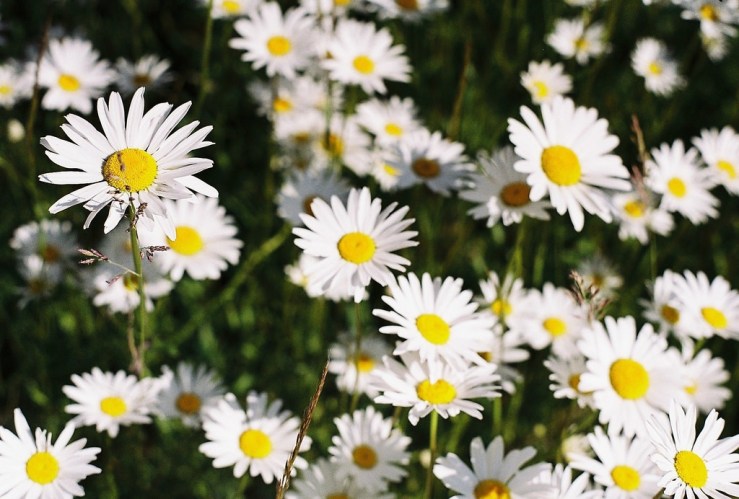
Film photography is one of the greatest joys of my life.
But how much of this pleasure can be experienced and enjoyed equally via a digital sensor, rather than on 35mm film?
To explore this, let’s start with the five biggest reasons I love film, in reverse order.
5. The look of film.
4. Using vintage cameras.
3. Using vintage lenses.
2. The immersive experience.
1. The freedom.
So (how) can each of these be recreated with a digital camera?
Specifically, I’m going to be talking about the digital camera I have come to enjoy using most recently, the Sony a100 DSLR, launched around 2006. I picked mine up this year used for a shade under £60.
Let’s look at each reason in more depth, and see how much the digital experience fulfils the needs I’ve found film photography satisfies.
5. The look of film
Film is unique in its look, and the warmth, grain and vibrant colours of film cannot be equalled, in my eyes. Also the sometimes unpredictable results add an extra variable and delight. Shooting expired film, for example.
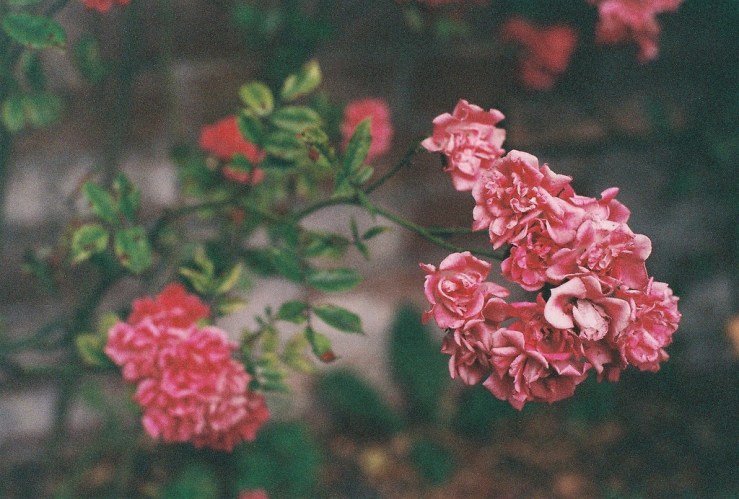
This being said, I’ve found a handful of film presets for LightRoom that, whilst they don’t recreate entirely the look of film, do give a softer and more endearing feel to my digital photographs. Often these have me smiling almost as much in the final image.

Plus, using the same vintage film lenses on digital bodies help get closer to the overall feel of shooting film. More on those later.
4. Using vintage cameras
No digital camera can compare to using an all metal and mechanical classic 35mm film camera like an Asahi Spotmatic F. Or the seductively smooth wind and shutter release of the wonderful Contax 139 Quartz. Not to mention its amazing, big bright viewfinder.

What I can say about my Sony a100 is it’s as close to a film camera as I have used, in that I enjoy the handling, plus everything is at hand.
The viewfinder is very usable – even with vintage, manual focus lenses, and its technology is intuitive and doesn’t get in the way of the experience of seeking and finding beautiful things to photograph.
3. Using vintage lenses
This reason has been absolutely pivotal in me learning to embrace and love digital photography. Discovering that adapters existed to shoot my old lenses on digital bodies was probably the biggest game-changer in my photography adventure.
My favourite vintage lenses (which are mostly M42 mount Takumar and Zeiss) can be used very easily on the a100, in the same Aperture Priority (Av) mode I use 90% of the time with my film bodies.
The delicious quality and handling of the Takumars, and the biting sharpness and close focus of the Zeiss Pancolar 50/1.8 and Flektogon 35/2.4 are just the same on the a100, meaning half of my pair of hands is just as happy as when using them on film.
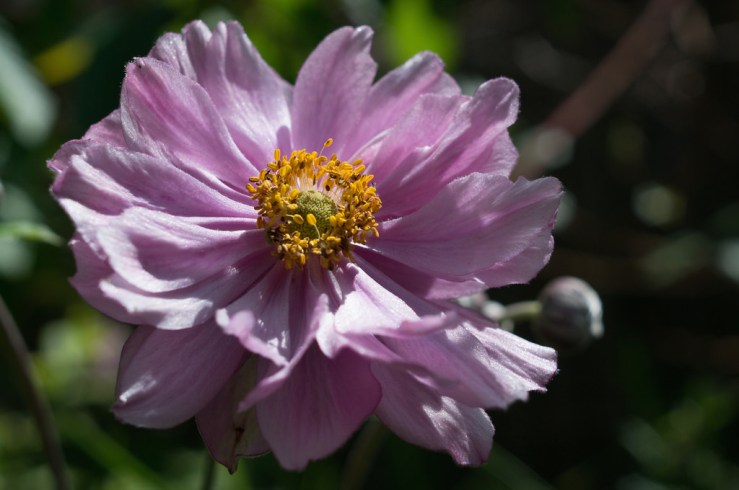
Yes, there is the crop factor of 1.5x, meaning a 50mm lens for a 35mm film camera gives an equivalent field of view of around 75mm on the a100 with its APS-C sensor.
But I have a range of focal lengths that fits my needs with the 35mm Flektogon (52.5mm field of view on the a100), 50mm Pancolar (75mm), 55mm Takumar (82.5mm), 58mm Helios 44-2 (87mm), 105mm Takumar (157.5mm) and 135mm Zeiss Sonnar and Jupiter-37a (202.5mm).
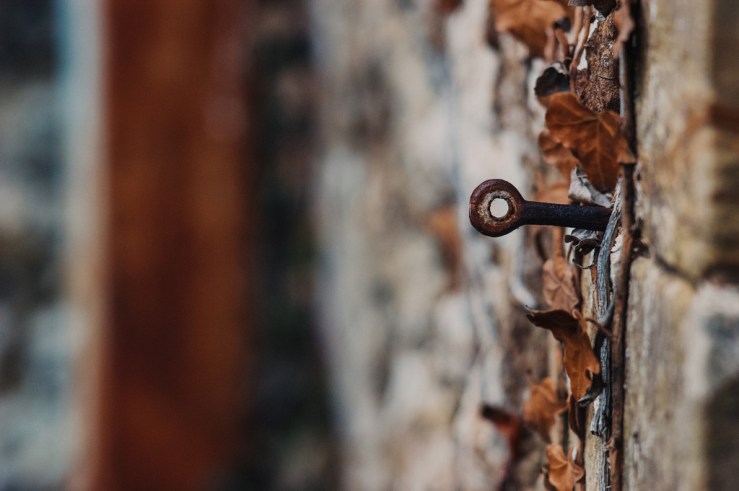
Plus, because the digital sensor only uses the central part of the lenses, where they deliver their optimum performance, you’re eliminating all of the outer edge weaknesses the lenses may reveal on 35mm film.
Also, since exploring Sony Alpha cameras, I’ve also bought three mid-80’s vintage Minolta AF lenses.
These lenses share the same mount (which Sony inherited when they bought the photographic arm of Konica Minolta on the mid 2000s), so fit straight on and are usable with all exposure modes.
I’ve been blown away by their performance, colours and sharpness, something I would not have experienced had I not gone down the Sony route and stuck purely to M42 lenses.
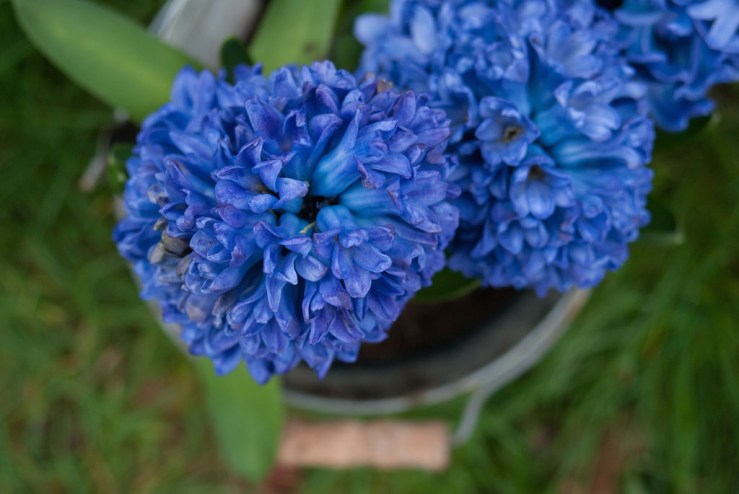
2. The immersive experience
Using a film camera with a large bright viewfinder like the Contax 139 Quartz literally sucks one into the VF. Everything in the world except what’s in that rectangle is blocked out and forgotten.
Add the experience of focusing and adjusting depth of field (DOF) whilst using that larger than life VF immersion, it becomes a major highlight of my favourite film cameras.
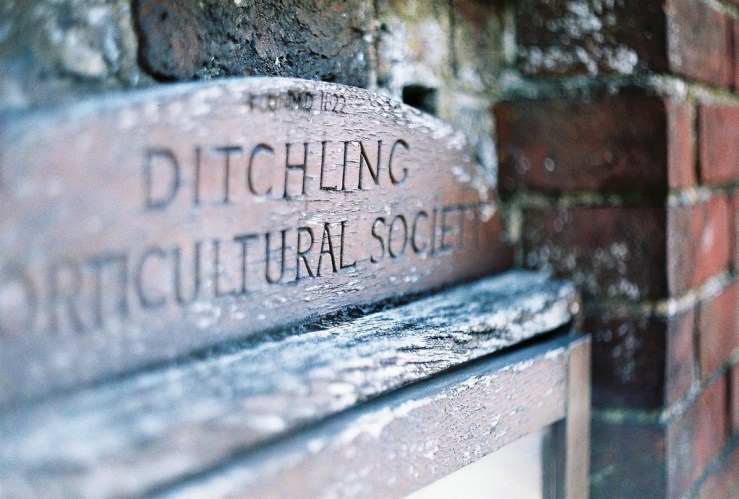
The a100 can’t claim to have as big or bright a VF as the cream of my film cameras.
But it’s more than adequate to provide a very similarly immersive experience, and with a DOF preview button for native lenses (and of course the manual stop down of vintage M42 lenses which provides a constant DOF preview anyway), again it provides those same visual reward and engagement whilst shooting.
Or in other words, I still forget everything else but what’s in that little rectangle.
Which brings us on to the final, and most vital experience film photography brings me.
1. The freedom
Being able to grab a camera and head out to the sticks and wander around for an hour or two, hunting out beauty, gives me a huge sense of freedom and escape.
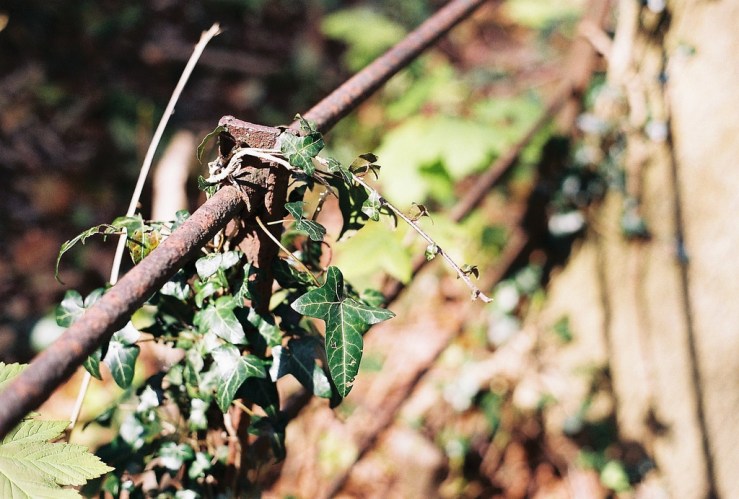
I’m very fortunate to have all I do have in my life, but this need for escape is still strong.
Packing a camera with me, with its immersive experience (see no4) via vintage lenses (no3), enhances that hunt for beauty further and deeper, and helps me see and appreciate things I might not otherwise notice.
And so, we come to the title of this post, and the revelation I had – that the top three of the five most important reasons I love film photography are almost (say 95%) as rewarding with my digital Sony a100.
No, when shooting with the Sony, I don’t have film, its emotive nostalgia, tactile experience and unique grain and feel, or the pleasure of using a smooth highly crafted mechanical machine like my Contax 139 Quartz.
But I’m not giving these up, just using them alternately, in conjunction with digital.

Plus digital, with its instant feedback and cheaper ongoing cost (as long as we don’t get caught up in forever chasing the latest and greatest digital wonder and its ever increasing cost – as I said my little a100 cost me £60 used, about the same as my Contax bodies) offers some benefits film can’t.
I’m still a die hard film lover.
But thanks to using the same vintage lenses on my Sony a100, I’m loving digital more than ever before too.

Combining the two is allowing me to create not only a consistent experience, but also, I hope, a coherent and congruous body of work, which transcends which camera I used to make the pictures.
What are your favourite reasons for shooting film and digital, and how much do they overlap?
Let us know in the comments below.
Thanks for reading. Please share this post with others you feel will enjoy it too.


Excellent photography and a good read!
Thanks Chris! What are your favourites cameras for film and digital?
Soooo now that I have an adapter for M42 lenses on EOS, I’m lightly looking for a Canon DSLR. Because really, if I can shoot my 55/1.8 and have photos immediately, holy cow do I want that.
And that’s why I shoot digital: because I can use the pics right now. And I can shoot a lot, because the costs are already sunk.
Thanks Jim.
My thinking was very similar on the EOS front, and my first option for a DSLR was an EOS.
I have a post currently in draft as to why I went with a Sony Alpha instead, but in short the Sony just felt better in the hands, and had a superior viewfinder to the Canon I tested (40D).
If you can try a camera in person I’d recommend it – some DLSRs have surprisingly tiny VFs, which makes them a challenge with a manual focus lens, and just not that pleasant to use.
I agree about cost too, that is a factor for me. I think people argue digital is just as expensive in the long run because you “have” to upgrade every year or two to the latest model, whereas with film a classic body can last a lifetime.
The trick is to not get sucked into the upgrade cycle! My Sony a100 was made from 2006, so it’s hardly cutting edge, but still takes (IMO) very good photographs. Plus it doesn’t have so many features it feels like a device or appliance rather than a camera.
[…] How I Shoot Film With A Digital Sensor […]
[…] How I Shoot Film With A Digital Sensor […]
[…] I wrote about this in more depth recently, but the short version is – to roam the English countryside, to feel the immersion of the moment and the whole world being in the viewfinder, to capture things I find beautiful, and to enjoy using vintage camera gear. […]
[…] little while back I talked about five reasons I love shooting film and found that using digital cameras with the same lenses offers much of the same […]
[…] But there came a point some months back where I deconstructed what film photography gave me, and whether these benefits could be gained from a dig…. […]
[…] example, when I asked these questions maybe nine months ago when I was shooting mostly film, I realised that probably four of my top five […]
[…] How I Shoot Film With A Digital Sensor – The post where I figured out that most of the major reasons I love film photography are equally valid shooting digital. A major game changer. […]
Dan, your post was great, a d sums up how I feel about film vs digital. Love the film machines and lenses, love the convenience. Do you know or do you know where to look into using my vintage Ai-s and AI lenses on my current D3400 Nikon SLR?? Love your images! What presets have you found to give that film look?? They’re great.
Hi Martin, thanks for reading and your comments.
Re the Nikons, I have no idea, so I googled it and found this chart Nikon have published – https://www.nikonusa.com/Images/Learn-Explore/Photography-Techniques/2011/Which-Nikkor-is-Right-for-You/Media/NIKKOR-lens-compatibility-chart.pdf
So it looks like you can use all AF-S, AF-P and E-Type lenses with full compatibility.
AI lenses it says – Limited Compatibility, Exposure cannot be metered, you must use a light meter.
AF lenses is says – Limited Compatibility, Can only be used manual focus, no AF.
So it depends how willing you are to use manual metering and/or manual focus.
From memory I don’t think Nikon is very compatible with other brands. Canon DSLRs for example use the EOS mount which is much more “friendly” not only with their own older lenses, but with other mounts too.
https://www.canon.co.uk/lenses/tech-guide/compatibility/
Because the lens mount is physically a very wide opening, there are many adapters for other mounts that have smaller openings. I used a film EOS with an M42 adapter, and it was a fantastic option – a compact, lightweight modern body with reliable metering, but with all the charm of the vintage M42 lenses. I wrote about it here – https://35hunter.wordpress.com/2017/02/15/how-to-start-film-photography-for-27/
The Canon DSLRs continued with the same mount, so are just as adaptable. If you want a DSLR that is adaptable to a wide range of vintage lens, the older Canons represent a very appealing option. With any DSLR (indeed with any digital body) I would check out the viewfinder (VF) spec before you buy, and try it out in person if possible. I’ve been shocked by how poor some of the VFs are in modern digital cameras compared with film cameras. A major reason I went with the Pentax K10D is the 95% 0.95x viewfinder which makes it relatively comfortable to use with vintage manual focus lenses.
The images above in the post are a mixture of film and digital. The film ones are scans straight off the CD from the lab, I don’t touch them at all. Of the digital ones, some have a LightRoom preset, but most are simply imported into LightRoom as RAW then exported as JPEG, with just LightRoom’s own minor enhancements, again I haven’t touched the ones that say “no post processing”. Preset Love have some useful preset you can download – http://presetlove.com/ I’ve also experimented a little with XEquals – https://x-equals.com/product/xequals-bundle/
I have a couple of posts scheduled to publish very soon actually about processing, and how I’ve been experimenting with Hipstamatic on my iPad instead of LightRoom on my MacBook. The short version is I love it, it’s much more intuitive and gives as good if not better results. So look out for those posts soon (you can subscribe to receive posts by email if you haven’t already).
Hope that helps Martin, please let me know.
Thanks, Dan, your answer was very helpful. When I think about which lens I love best, my 2 favorites are a Takumar 28/2.8 which has beautiful contrast and Pentax manual focus SMC-A 50/2.0. Next are a Minolta MC 50/1.7. I love your photos taken with the Sony – are there adapters available to shoot Pentax K mount on that camera? Another option might be a Pentax *IST-D body, which are quite affordable, with adapter for the Minolta lenses. I really want to shoot aperture priority. Using my vintage Nikons on my D3400 in manual is unsatisfying, leaving me to guess exposure and then adjust based on the histogram. Appreciate again your insight and guidance!
Marty
Hi Marty,
Glad it was of some help.
Yes absolutely the PK adapters are widely availably for the NEX. They cost around £10 on eBay. You just want Pentax K (or PK) to Sony NEX/E Mount. You can shoot aperture priority, though if I recall there’s a setting somewhere in the camera you have to change to allow it, something like “fire shutter with no lens”, as the adapters have no electrical contact to tell the camera they’re attached.
For the Takumar you’ll need an M42 adapter. I’m assuming it’s an original Asahi Takumar, not one of the much later K mounts that Pentax decided to revive the name for for some reason?
Minolta adapters are also available for the NEX, I used these extensively too. Beautiful lenses, some of the best I’ve used. Just a shame I never found a Minolta film body that I liked and was reliable.
If you have a look at my NEX photos on Flickr, nearly all will have the lens used in the description and tags –
I have a Samsung GX-1s, which is a rebranded Pentax *ist DS2. At the time Pentax and Samsung were in collaboration. I also have a Samsung GX-10 which is near identical to the Pentax K10D.
The GX-1s is a great little camera, like a baby version of the mighty K10D. It doesn’t have quite so many features, and the sensor is lower res at 6MP. But in all honesty unless you’re making huge prints, it’s hard to tell the difference between photos made with the K10D’s 10MP sensor and the GX-1s’s 6MP. Both are the renowned CCD sensors. And ironically both made by Sony I understand!
If you go the *ist D route, please check out the different models. I think the sensor is the same in all of them, but some have a bigger, higher res screen, and bigger, brighter higher magnification VF. The better ones have a pentaprism rather than a pentamirror too, in fact the VF is the same as in the K10D. The Samsung I have is equivalent to the *ist DS2 which I think from my research back then was the best spec’d *ist they ever made. I know they did a DL for example which was more entry level, and I avoided. I haven’t tried a model with a smaller screen and VF in person, I just know both are “inferior” and I wanted the best version, especially for using the VF with manual focus lenses. I paid around £50 for my GX-1s.
There’s more here – https://en.wikipedia.org/wiki/Pentax_*ist_D
With the NEX I always shot aperture priority and the exposures were excellent. With the K10D and the GX-1s I tend to shoot manual as it’s easier and the approach can be consistent whether using M42 lenses (with an adapter) or K mount. Plus you get to know for each lens whether it needs a little exposure adjustment and can easily account for that with manual mode using the readout in the VF. If you get a K mount body and want to use M42 lenses I would strongly recommend the official Pentax adapter that fits flush inside the camera’s lens mount. Third party ones are often thicker and mess around with the focus.
Enjoy!
I wonder if you can install the LightRoom app on your iPad? It’s my app of choice on my iPhone now, I can’t be bothered with Hipstamatic, too fiddly for me. Also, the results look false and contrived. I want as little post processing as possible, none at all is even better. I have the LightRoom app permanently on square format and use the automatic edit if required. Very pleased with it so far, and I’m only using the basic free version. I don’t think I need anything more. (Plus my iPhone is slowly dying, so I’ll probably go back to Android in the near future, unless my son gives me his iPhone… Again…)
Hi Adrian, thanks for your thoughts. To be honest I wasn’t aware there was a LightRoom for iPad and given my recent experiences with Adobe (more on that in an upcoming post) I’m done with LightRoom. Hipstamatic does all I need, from a very minimal exposure adjustment to major lo-fi makeovers. If I want that sort of thing.
On my iPhone I use Hipstamatic to take pictures but rarely do any after editing. Virtually everything is too fiddly for me on my modest (5C) iPhone. On the iPad thought it’s massively easier to see and use.
I know there are others too (Snapseed looks good for Android users) but I’m not interested in using a range then choosing which is best when the one I have works fine. I’ve learned this lesson from too many cameras and lenses over the last few years!
Great that you’ve found an option that works for you, that’s what it’s all about.
[…] just suits me better and offers me the main aspects of photography I value (wandering woods, fields, sleepy villages, and churchyards hunting for beautiful things to capture) […]
[…] was of course wise to do this, as I oscillated between compacts and SLRs, before my (re)discovery of digital and how it offered me virtually all that film did (and sometimes more), saw me leave film and film cameras gathering dust on the […]